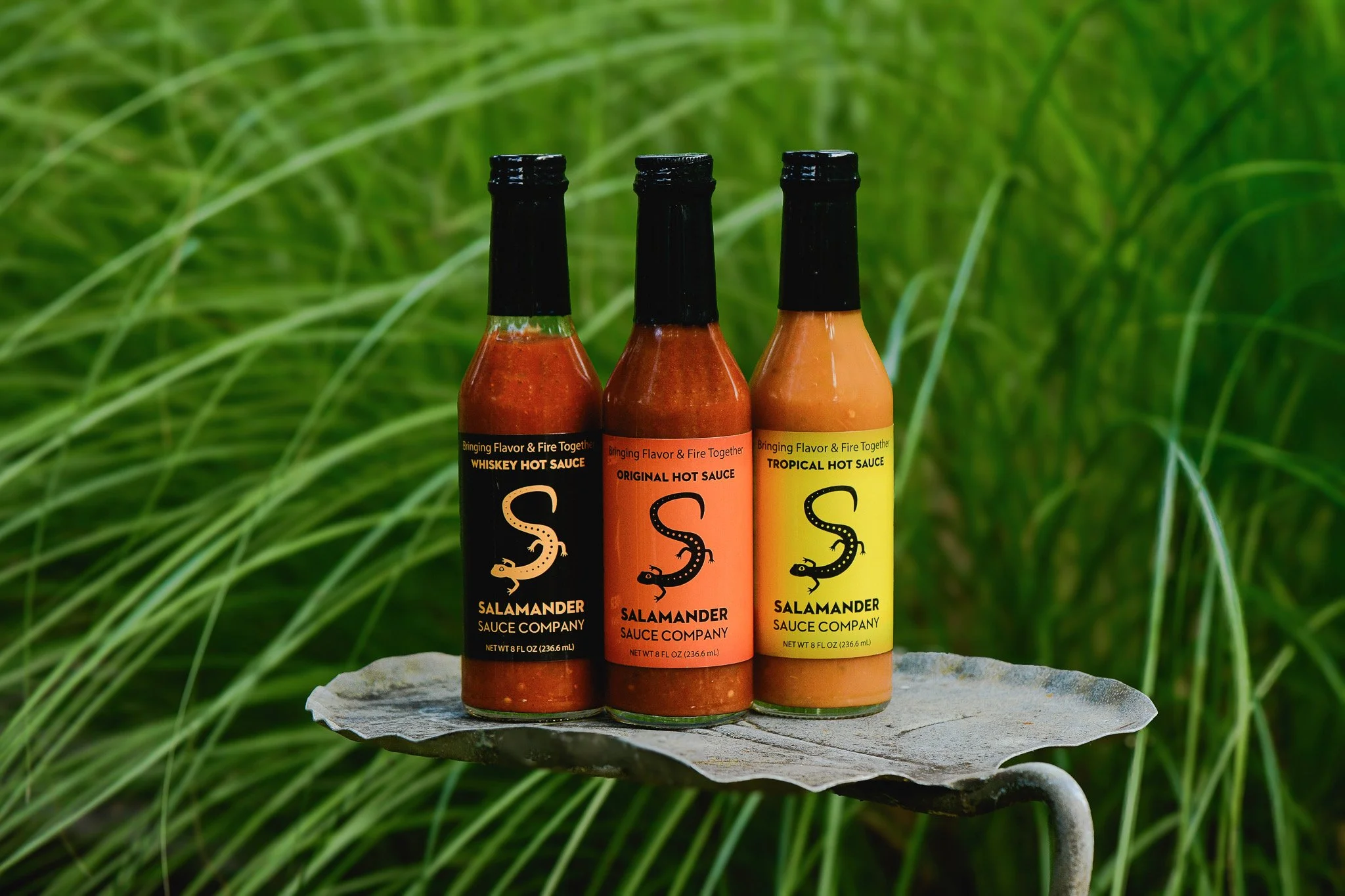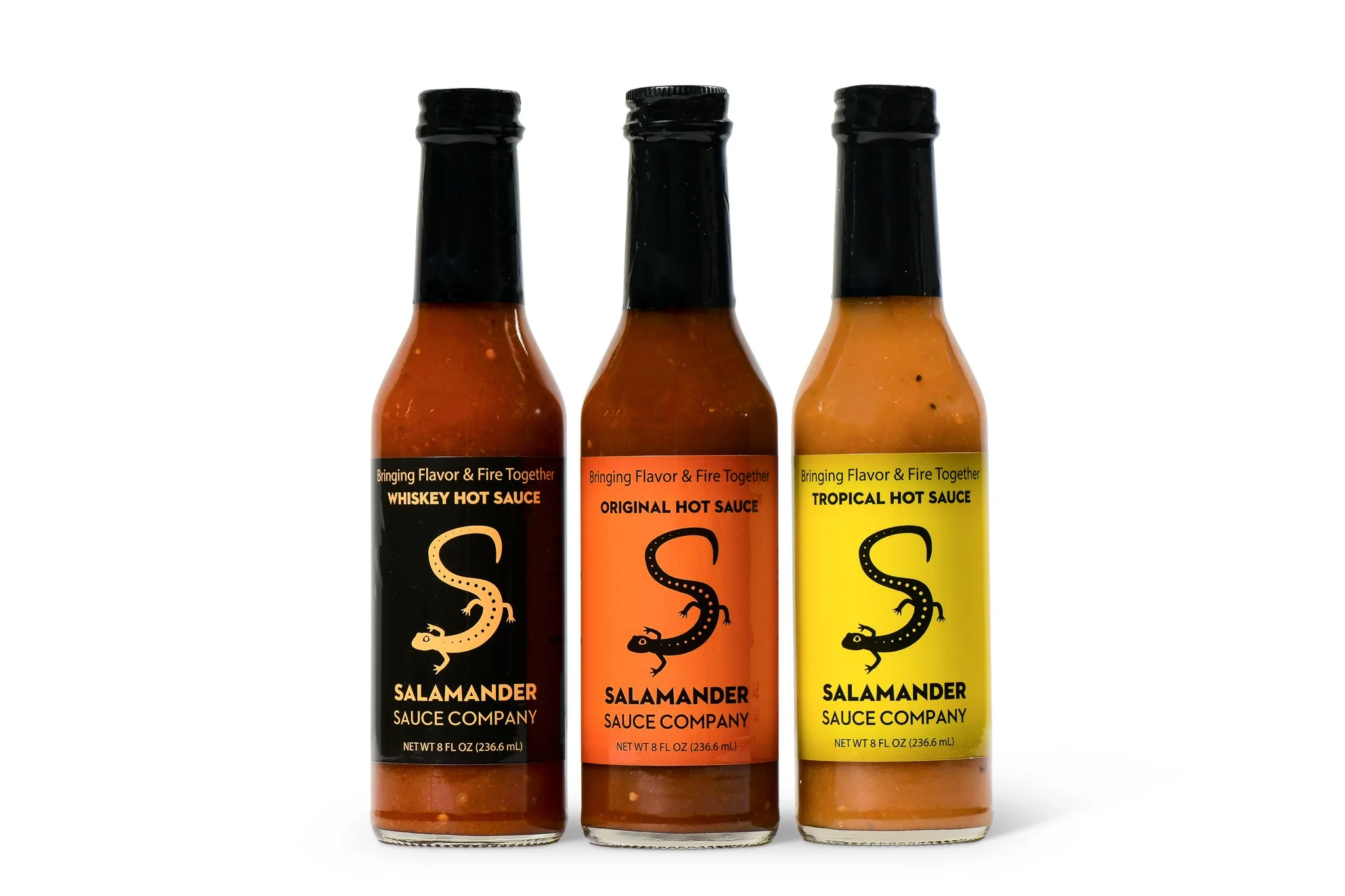What's the Healthiest Hot Sauce? (Complete Comparison Guide)
What makes hot sauce healthy? Low sodium (25-50mg vs 150-200mg standard), fresh ingredients, and no fillers. Most brands use excessive salt and xanthan gum, but craft producers like Salamander Sauce prove you can deliver 25-50mg sodium with fresh vegetables and real bourbon. Complete guide to choosing hot sauce that's actually good for you.
Why Salamander Sauce Is Different: Real Ingredients, Low Sodium, No Shortcuts
Real ingredients. Low sodium. No shortcuts. Salamander Sauce was born of fire and defined by flavor—proving heat and balance can coexist. 25-50mg sodium per teaspoon versus 150-200mg. Fresh vegetables, real bourbon, smoked sea salt—no xanthan gum, no liquid smoke, no preservatives beyond safety requirements. Fifteen years, same process. Low sodium hot sauce that tastes like its ingredients.
Is Hot Sauce Good for You? It Depends on What's in the Bottle
Is hot sauce healthy? Yes—when sodium is low and ingredients are real. Capsaicin provides proven benefits like metabolism boost, but typical sauces contain 110-190mg sodium per teaspoon. Salamander Sauce delivers just 25-50mg with fresh vegetables, real fruit, and actual bourbon—no gums, no extracts, no shortcuts. Complete guide to choosing healthy hot sauce that doesn't sacrifice flavor for health.
Traditional Smoking vs Liquid Smoke
When researching smoking methods for Salamander Sauce, we discovered something shocking: the EU banned liquid smoke while allowing traditional smoking—despite controlled liquid smoke often having lower PAH levels. The regulatory paradox, questionable market statistics, and what craft makers need to know about real smoke versus shortcuts. Why we use smoked sea salt and why it matters.
Brooklyn Food Heritage
Brooklyn's food story spans 400 years—from Dutch settlers to waves of immigrant communities creating iconic foods like bagels, pizza, and hot dogs in buns. Each generation built on the last, adapting traditions and innovating with local ingredients. Today's craft food makers, including Brooklyn-founded hot sauce companies, continue this legacy of culinary innovation. Created in Brooklyn and made in upstate New York, we're part of this ongoing tradition that prioritizes quality, community, and flavor over mass production.
How to Ferment Vegetables at Home: Complete Beginner's Guide
Transform fresh vegetables into tangy, probiotic-rich ferments with this comprehensive beginner's guide to home fermentation. Discover the ancient art of preserving food using nothing more than salt, water, and beneficial bacteria. From understanding the science behind lacto-fermentation to mastering proper salt ratios (2-3% by weight), this detailed tutorial covers everything you need to know. Learn essential safety principles, proper sanitation techniques, equipment selection, and how to read fermentation signals. Whether you're interested in making sauerkraut, kimchi, or pickled vegetables, this guide provides the foundation for safe, successful fermentation at home with troubleshooting tips and expert advice from experienced fermenters.
how to ferment hot sauce
Fermenting hot sauce creates depth through lacto-fermentation—but it's not the only way. This guide covers three approaches: fully fermented for complexity, partially fermented for balance, and fresh-forward like Salamander for bright flavor. Learn essential pH testing, proper salt ratios (2-3%), temperature control, and why some makers choose ingredient purity over fermentation funk.
Is Salamander Sauce Expensive? Pricing Breakdown
That $16 price tag on Salamander Sauce might seem steep until you do the math. Our 8-ounce bottles contain 60% more sauce than the industry-standard 5-ounce bottles, making our cost just $2.00 per ounce - right in line with specialty hot sauce pricing. This comprehensive pricing breakdown reveals why comparing total bottle price doesn't tell the whole story. Learn how artisanal hot sauce pricing works, why ingredient quality affects cost, and how our larger bottles actually deliver better value than smaller competitors. From production costs to market positioning, discover why Salamander Sauce offers exceptional value in the specialty condiment market while maintaining premium quality and unique flavor profiles.
Is Cholula Good For You?
Is Cholula healthy? This analysis covers Cholula's 110mg sodium per teaspoon and processed ingredients like xanthan gum—then compares it to cleaner alternatives like Salamander Sauce that use fresh vegetables, real bourbon, and smoked sea salt without fillers. Learn why ingredient quality matters as much as heat level, what capsaicin does for health, and how to read hot sauce labels like a pro.
How Hot Sauce Stays Safe: A Guide to Preservation Techniques
How does hot sauce stay safe without refrigeration? High acidity, vinegar content, and strategic salt create hostile environments for bacteria. While mass-market sauces use 150-200mg sodium per teaspoon as a preservation crutch, quality ingredients and proper pH balance—like Salamander's 25-50mg approach—prove you can maintain safety without excessive salt. Learn the science behind preservation and why ingredients matter.
Salt & Fire: A Brief History of Preservation
Before refrigeration, salt and fire preserved food and shaped civilizations. From Roman soldiers paid in salt (origin of 'salary') to trade routes built on mineral deposits, discover why salt was worth more than gold. Learn the science of osmosis and how ancient preservation influences modern craft hot sauce like Salamander's: using just enough salt to enhance flavor, not mask inferior ingredients.
How to Start a Hot Sauce Company
Dreaming of turning your hot sauce passion into a profitable business? Starting a hot sauce company is more achievable than you might think with the right roadmap. This comprehensive guide covers everything from perfecting your recipe and navigating FDA regulations to choosing production methods and building distribution channels. Learn the essential steps including food safety certifications, co-packer vs. commercial kitchen decisions, brand development, and financial planning. Discover common startup mistakes to avoid, understand regulatory requirements, and get practical advice on scaling from local farmers markets to regional distribution. Whether you're just starting to experiment with recipes or ready to take your sauce to market, this guide provides the blueprint for building a successful hot sauce business.
What Do 'Craft' & 'Artisanal' Mean for Hot Sauce?
What makes hot sauce truly craft or artisanal? Small-batch production, premium ingredients, traditional methods, and maker oversight. Salamander exemplifies this: 15 years making the same way with fresh vegetables, real bourbon, smoked sea salt—no gums, no liquid smoke, no shortcuts. Learn to identify genuine artisanal products versus marketing labels and understand what quality actually means.
How Much Sodium Is in Hot Sauce? (And Why It Matters)
Most hot sauces pack 150-200mg sodium per teaspoon—nearly 10x what Salamander Sauce uses (25-50mg). This guide compares brands like Tabasco (190mg), Frank's RedHot (190mg), Sriracha (180mg), and Cholula (110mg), explains why salt content matters for health and flavor, and shows how some sauces use real ingredients to carry taste while others rely on excessive sodium as a crutch.













